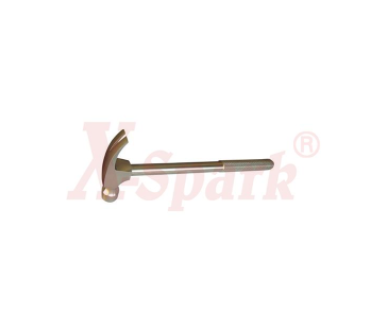How are Titanium Tools Made?
The cutting forces when machining titanium alloys are only slightly higher than steel of equivalent hardness, but the physical phenomenon of machining titanium alloys is much more complex than machining steel, making the machining of titanium tools extremely difficult.
Difficulties in manufacturing
Most titanium alloys have a very low thermal conductivity, 1/7th that of steel and 1/16th that of aluminum, so the heat generated during the cutting of titanium alloys is not quickly transferred to the titanium tools or carried away by the chips, but instead collects in the cutting area. The resulting temperature can be as high as 1,000°C or more, causing rapid wear, chipping, and chip tumor formation on the cutting edge of the tool.
The elasticity of titanium alloys may be beneficial to the performance of titanium tools, but the elastic deformation of titanium tools is an important cause of vibration during the cutting process. The cutting pressure causes the "elastic" titanium tools to move away from the tool and bounce back, causing more friction between the tool and the titanium tools than the cutting action. The friction process also generates heat, which aggravates the problem of poor thermal conductivity of titanium alloys.
Process of manufacturing titanium tools
Based on the understanding of the machining mechanism of titanium alloys and the previous experience, the main process know-how for machining titanium tools is as follows.
1. Maintain constant feed to avoid hardening of the workpiece, always feed the tool during the cutting process, and the radial draft ae should be 30% of the radius during milling.
2. use positive angle type geometry of inserts to reduce cutting forces, cutting heat, and deformation of the workpiece.
3. Keep the insert edge sharp, a dull tool is the cause of heat build-up and wear, which can easily lead to tool failure.
(4) Use high pressure and high flow cutting fluid to ensure the thermal stability of the machining process and to prevent workpiece surface denaturation and tool damage due to high temperature.
5. Use a large tip radius or chamfered plunge to bring as much of the cutting edge into the cut as possible. This reduces the cutting force and heat at each point and prevents local breakage. In milling titanium alloy, the cutting speed of each cutting parameter has the greatest effect on tool life VC, with a radial draft (milling depth) ae second.
6. as far as possible in the softest state of titanium alloy machining, because after hardening the material becomes more difficult to machine, heat treatment increases the strength of the material and increases the wear of the insert.
We are a titanium tools supplier, please feel free to contact us if you need them.




